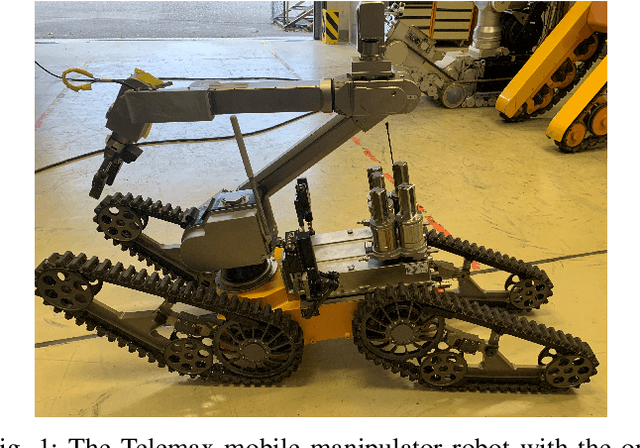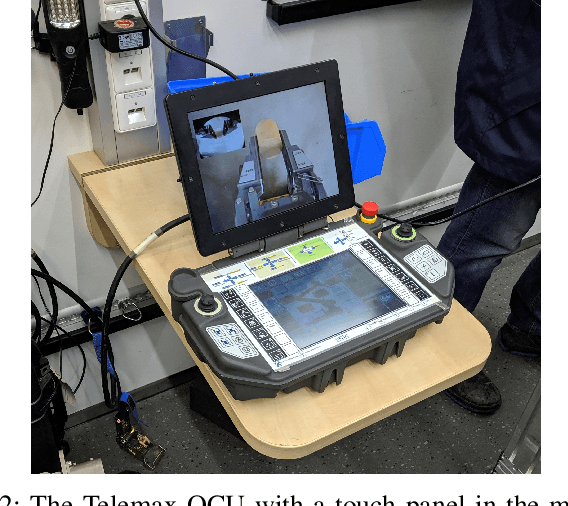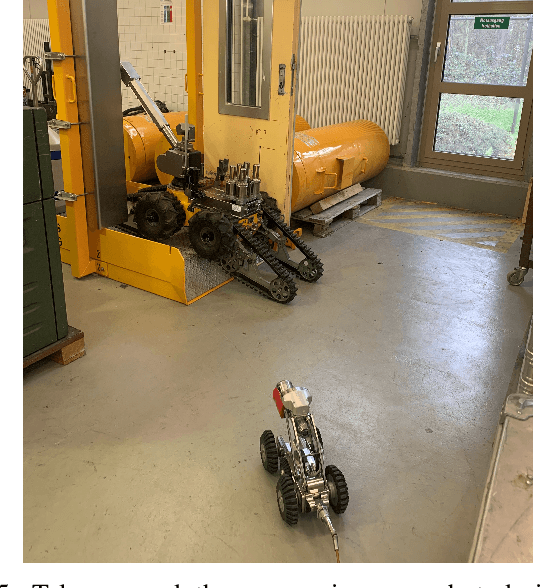Pantelis Pappas
Robot-Assisted Nuclear Disaster Response: Report and Insights from a Field Exercise
Jul 01, 2022



Abstract:This paper reports on insights by robotics researchers that participated in a 5-day robot-assisted nuclear disaster response field exercise conducted by Kerntechnische Hilfdienst GmbH (KHG) in Karlsruhe, Germany. The German nuclear industry established KHG to provide a robot-assisted emergency response capability for nuclear accidents. We present a systematic description of the equipment used; the robot operators' training program; the field exercise and robot tasks; and the protocols followed during the exercise. Additionally, we provide insights and suggestions for advancing disaster response robotics based on these observations. Specifically, the main degradation in performance comes from the cognitive and attentional demands on the operator. Furthermore, robotic platforms and modules should aim to be robust and reliable in addition to their ease of use. Last, as emergency response stakeholders are often skeptical about using autonomous systems, we suggest adopting a variable autonomy paradigm to integrate autonomous robotic capabilities with the human-in-the-loop gradually. This middle ground between teleoperation and autonomy can increase end-user acceptance while directly alleviating some of the operator's robot control burden and maintaining the resilience of the human-in-the-loop.
VFH+ based shared control for remotely operated mobile robots
Nov 10, 2020



Abstract:This paper addresses the problem of safe and efficient navigation in remotely controlled robots operating in hazardous and unstructured environments; or conducting other remote robotic tasks. A shared control method is presented which blends the commands from a VFH+ obstacle avoidance navigation module with the teleoperation commands provided by an operator via a joypad. The presented approach offers several advantages such as flexibility allowing for a straightforward adaptation of the controller's behaviour and easy integration with variable autonomy systems; as well as the ability to cope with dynamic environments. The advantages of the presented controller are demonstrated by an experimental evaluation in a disaster response scenario. More specifically, presented evidence show a clear performance increase in terms of safety and task completion time compared to a pure teleoperation approach, as well as an ability to cope with previously unobserved obstacles.
 Add to Chrome
Add to Chrome Add to Firefox
Add to Firefox Add to Edge
Add to Edge